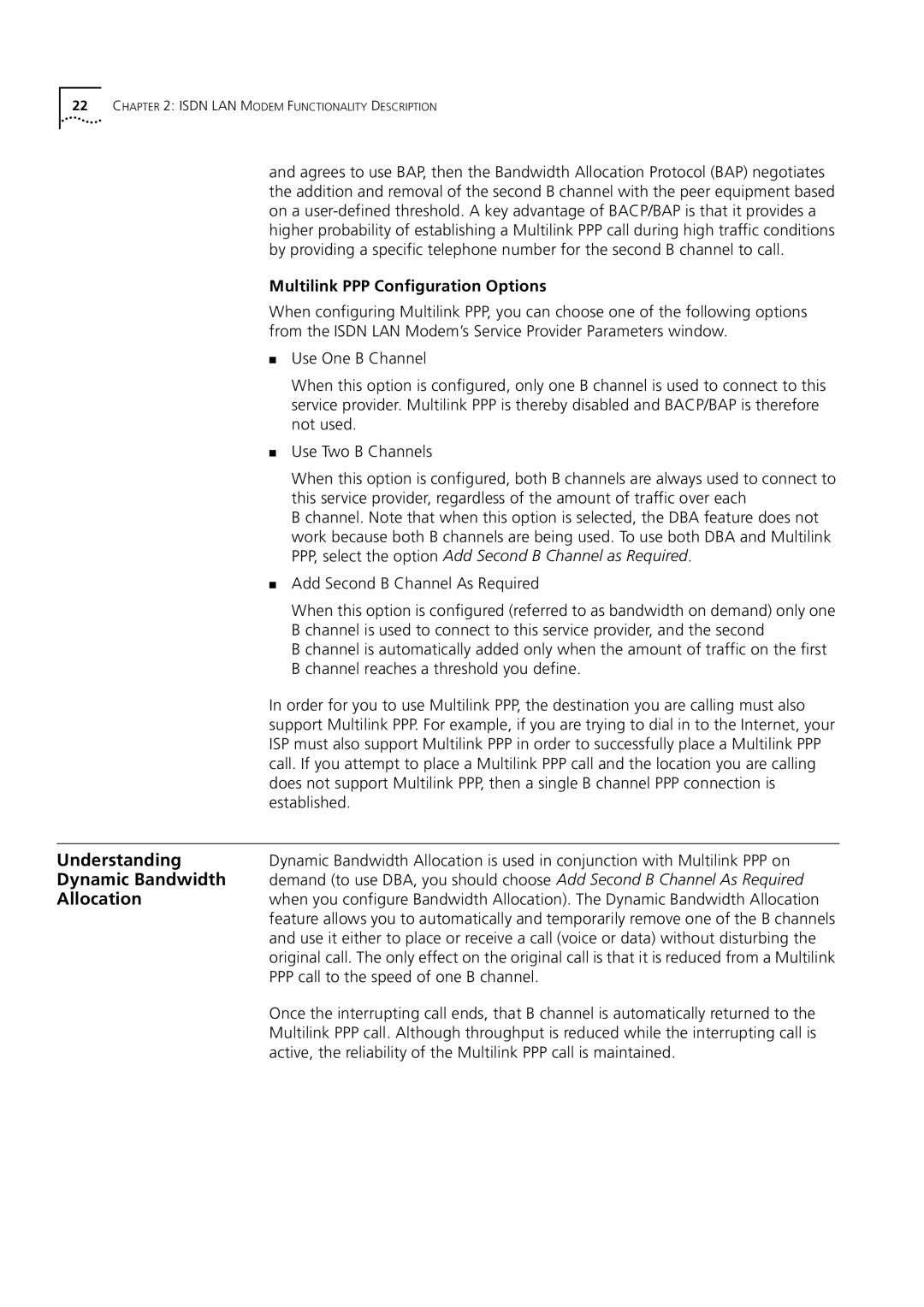22CHAPTER 2: ISDN LAN MODEM FUNCTIONALITY DESCRIPTION
and agrees to use BAP, then the Bandwidth Allocation Protocol (BAP) negotiates the addition and removal of the second B channel with the peer equipment based on a
Multilink PPP Configuration Options
When configuring Multilink PPP, you can choose one of the following options from the ISDN LAN Modem’s Service Provider Parameters window.
■ Use One B Channel
When this option is configured, only one B channel is used to connect to this service provider. Multilink PPP is thereby disabled and BACP/BAP is therefore not used.
■ Use Two B Channels
When this option is configured, both B channels are always used to connect to this service provider, regardless of the amount of traffic over each
B channel. Note that when this option is selected, the DBA feature does not work because both B channels are being used. To use both DBA and Multilink PPP, select the option Add Second B Channel as Required.
■ Add Second B Channel As Required
When this option is configured (referred to as bandwidth on demand) only one
B channel is used to connect to this service provider, and the second
B channel is automatically added only when the amount of traffic on the first
B channel reaches a threshold you define.
| In order for you to use Multilink PPP, the destination you are calling must also |
| support Multilink PPP. For example, if you are trying to dial in to the Internet, your |
| ISP must also support Multilink PPP in order to successfully place a Multilink PPP |
| call. If you attempt to place a Multilink PPP call and the location you are calling |
| does not support Multilink PPP, then a single B channel PPP connection is |
| established. |
|
|
Understanding | Dynamic Bandwidth Allocation is used in conjunction with Multilink PPP on |
Dynamic Bandwidth | demand (to use DBA, you should choose Add Second B Channel As Required |
Allocation | when you configure Bandwidth Allocation). The Dynamic Bandwidth Allocation |
| feature allows you to automatically and temporarily remove one of the B channels |
| and use it either to place or receive a call (voice or data) without disturbing the |
| original call. The only effect on the original call is that it is reduced from a Multilink |
| PPP call to the speed of one B channel. |
| Once the interrupting call ends, that B channel is automatically returned to the |
| Multilink PPP call. Although throughput is reduced while the interrupting call is |
| active, the reliability of the Multilink PPP call is maintained. |
